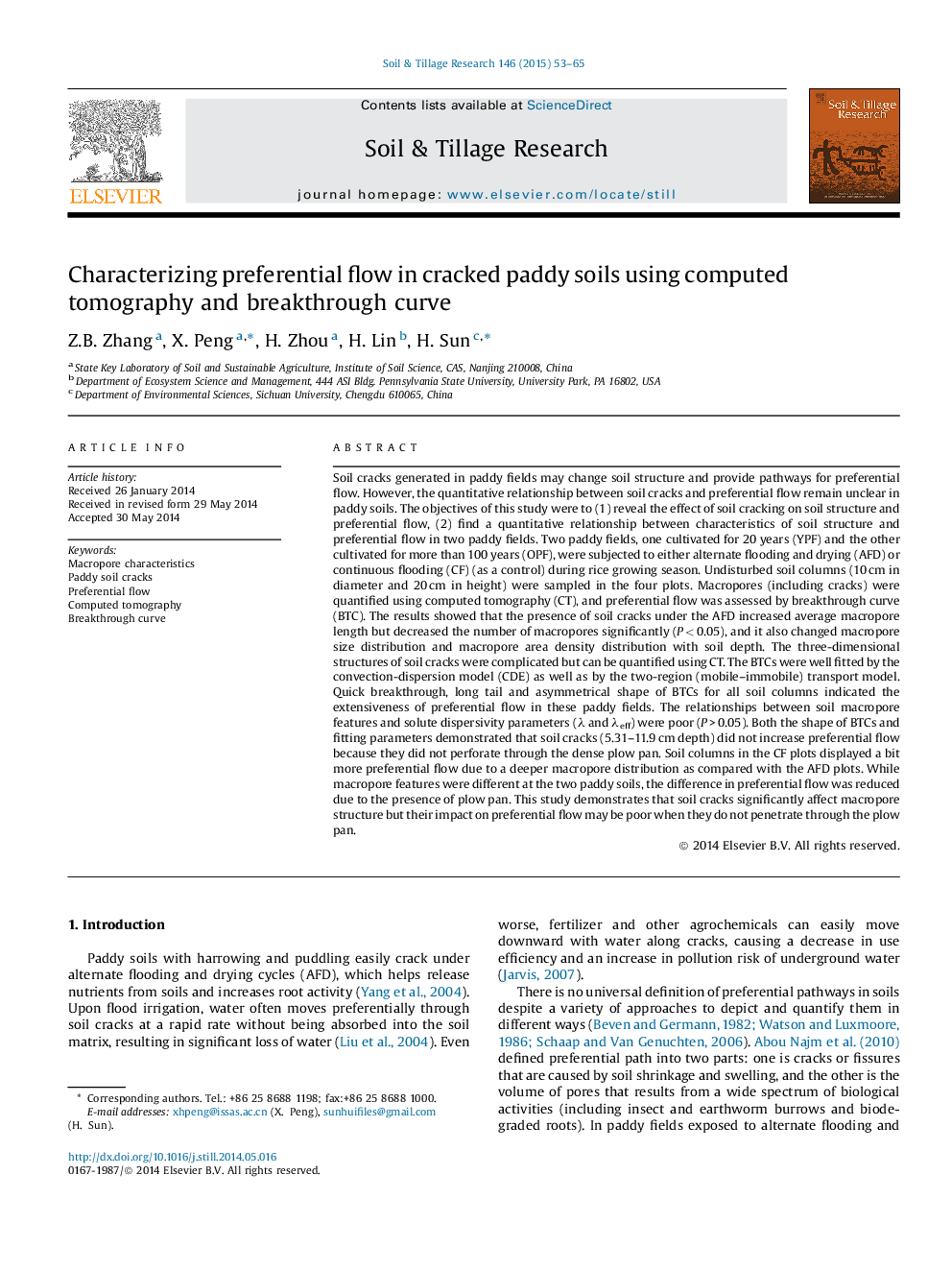| کد مقاله | کد نشریه | سال انتشار | مقاله انگلیسی | نسخه تمام متن |
|---|---|---|---|---|
| 305607 | 513039 | 2015 | 13 صفحه PDF | دانلود رایگان |
• Soil cracks significantly changed the macropore distribution in size and space.
• The breakthrough curves showed the existence of preferential flow in paddy soils.
• Soil cracks did not enhance preferential flow as they did not reach the plow pan.
• The relationships between soil macropore features and BTC parameters were poor.
• The difference in preferential flow between the soils was removed by the plow pan.
Soil cracks generated in paddy fields may change soil structure and provide pathways for preferential flow. However, the quantitative relationship between soil cracks and preferential flow remain unclear in paddy soils. The objectives of this study were to (1) reveal the effect of soil cracking on soil structure and preferential flow, (2) find a quantitative relationship between characteristics of soil structure and preferential flow in two paddy fields. Two paddy fields, one cultivated for 20 years (YPF) and the other cultivated for more than 100 years (OPF), were subjected to either alternate flooding and drying (AFD) or continuous flooding (CF) (as a control) during rice growing season. Undisturbed soil columns (10 cm in diameter and 20 cm in height) were sampled in the four plots. Macropores (including cracks) were quantified using computed tomography (CT), and preferential flow was assessed by breakthrough curve (BTC). The results showed that the presence of soil cracks under the AFD increased average macropore length but decreased the number of macropores significantly (P < 0.05), and it also changed macropore size distribution and macropore area density distribution with soil depth. The three-dimensional structures of soil cracks were complicated but can be quantified using CT. The BTCs were well fitted by the convection-dispersion model (CDE) as well as by the two-region (mobile–immobile) transport model. Quick breakthrough, long tail and asymmetrical shape of BTCs for all soil columns indicated the extensiveness of preferential flow in these paddy fields. The relationships between soil macropore features and solute dispersivity parameters (λ and λeff) were poor (P > 0.05). Both the shape of BTCs and fitting parameters demonstrated that soil cracks (5.31–11.9 cm depth) did not increase preferential flow because they did not perforate through the dense plow pan. Soil columns in the CF plots displayed a bit more preferential flow due to a deeper macropore distribution as compared with the AFD plots. While macropore features were different at the two paddy soils, the difference in preferential flow was reduced due to the presence of plow pan. This study demonstrates that soil cracks significantly affect macropore structure but their impact on preferential flow may be poor when they do not penetrate through the plow pan.
Journal: Soil and Tillage Research - Volume 146, Part A, March 2015, Pages 53–65
